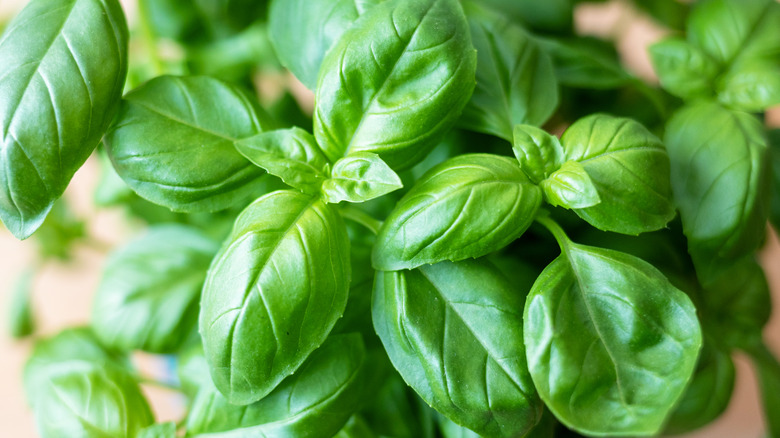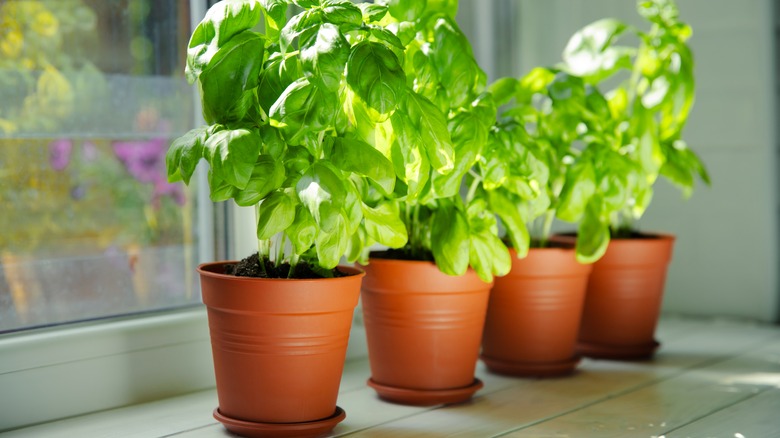How To Grow Basil Indoors So You Can Enjoy It All Year Long
There's nothing like fresh basil (Ocimum basilicum) in Italian and Mediterranean dishes like pizza, pasta, and chicken. It's a fragrant, flavorful, sweet, and mildly peppery herb that breathes life into any dish. Basil is a very tender perennial that thrives in USDA Hardiness Zones 10a and 10b. This may seem like bad news for basil lovers living in chilly climates, but there's an easy solution to keep this handy herb growing.
Fortunately, basil is easy to transplant and grow indoors, so you can ensure a bountiful harvest all year long. Once it's settled into its new environment, it's a pretty low-maintenance plant. All you'll need to grow thriving basil indoors is a medium-sized pot, a quality potting mix, and a source of sunlight. If possible, you can keep it on your kitchen windowsill as part of a kitchen herb garden for easy access while you cook and enjoy it in your favorite winter dishes.
Preparing your home to bring your basil plant indoors
If you want to bring your outdoor basil indoors for the winter, you'll need to make some preparations. Plan to bring it indoors before the first frost of the season and have your supplies ready before it's time to transplant. You'll need a pot with holes for drainage and enough space to keep your basil comfortable. A height and diameter of 8 to 12 inches is a good size. Then, you'll need to choose a high-quality potting mix. Basil thrives in slightly acidic soil with a pH of between 6 and 7.5. Watering your basil plant the day before transplanting makes it easier to remove. You should water it again after transplanting to help it get acclimated.
Make sure your basil has the right conditions to grow successfully indoors during winter. Basil should receive six to eight hours of direct sun daily, although you can use a grow light as well. The plant should also be kept between 65 and 80 degrees Fahrenheit. Ideally, the humidity of the space should stay between 40% and 60%. Finally, basil is a bit particular about its water. A good rule of thumb is to wait until the top inch of soil is dry before watering.

